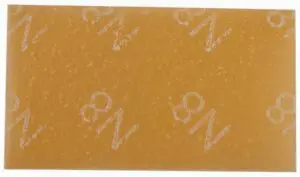What is Suboxone?
 Our approach to treating drug abuse and addiction has changed dramatically over the past 60 years. While traditional methods of rehab and therapy are still the most common treatments (and still effective), Western medicine now offers medical treatment for opioid addiction in the form of both opioid agonists like Naloxone and Buprenorphine (a partial opioid agonist). These drugs block the effects or part of the effects of opioids, preventing users from getting high or causing withdrawal symptoms when addicts relapse. Buprenorphine, sold under the brand name Suboxone, is one of the most common of these drugs, used in both short-term rehab and drug withdrawal and in long-term recovery maintenance as former addicts go through treatment and therapy and learn to live without drugs.
Our approach to treating drug abuse and addiction has changed dramatically over the past 60 years. While traditional methods of rehab and therapy are still the most common treatments (and still effective), Western medicine now offers medical treatment for opioid addiction in the form of both opioid agonists like Naloxone and Buprenorphine (a partial opioid agonist). These drugs block the effects or part of the effects of opioids, preventing users from getting high or causing withdrawal symptoms when addicts relapse. Buprenorphine, sold under the brand name Suboxone, is one of the most common of these drugs, used in both short-term rehab and drug withdrawal and in long-term recovery maintenance as former addicts go through treatment and therapy and learn to live without drugs.
If you or a loved one is suffering from an opioid addiction, Suboxone is an option and one you will be presented with for treatment. It’s important that you understand how the drug works, why you would want or not want to use it, and how it affects recovery.
What is Suboxone?
Suboxone is an opioid drug which is a combination of Buprenorphine Hydrochloride and Naloxone, and is classified as an opiate partial opioid agonist. It is a successor to Subutex, which was only Buprenorphine, and is now used less frequently. Suboxone can be used in medical settings to treat acute and chronic pain as well as opioid addiction, typically through injection, tablets, skin patches, or most recently, implants. In most cases, individuals are dosed by a medical professional in a clinic on a daily or weekly basis.
What is an Opiate Agonist?
An opioid agonist blocks or partially blocks the effects of opioid drugs, preventing them from causing a “high” effect.
Naloxone – Naloxone is an opiate agonist which fully blocks opioids from binding to opioid receptors in the brain. A full dose of Naloxone fully prevents opioids from binding and will force someone who is high on an opiate to go into withdrawal. Naloxone is commonly used to treat overdose because it can reverse the effects. However, it is dangerous for someone who is currently using to take Naloxone because they will go into withdrawal, which could initiate seizures and vomiting.
Buprenorphine – Buprenorphine is a partial opiate agonist, blocking most opioids from binding to opioid receptors in the brain. Here, the drug creates a “top limit” on the high a person is able to experience from opioids, effectively preventing them from getting “high” or experiencing euphoria while using. With a reduced high effect than other opiates and less addictive potential, it’s often used to treat drug abuse because it prevents individuals from getting high while preventing withdrawal symptoms and preventing cravings. Essentially, long-term opiate abusers can “step down” from a euphoria-inducing and addictive opiate such as heroin to a safer and less addictive opiate without experiencing cravings or withdrawal symptoms, go through therapy, and then taper off the drug. However, as an opiate, buprenorphine can be injected and abused.
Suboxone – Suboxone combines buprenorphine and naloxone, bringing the partial agonist effects of buprenorphine while preventing abuse with Naloxone. Users who inject large amounts of Suboxone will go into withdrawal.
Effects of Suboxone
Suboxone is an opioid drug and like other opioids, it will have side effects. For this reason, it should only be used under medical supervision and according to the prescription. Suboxone is a long-acting opioid with effects lasting up to 3 days after the last dose. Like other opiates, Suboxone can also cause respiratory distress, sedation, coma, and death when used in combination with other drugs such as benzodiazepines or alcohol.
Short-Term Effects – Suboxone causes short-term effects including pain relief, mild euphoria, fatigue, confusion, nausea and potentially vomiting, and potential respiratory depression. When used at a low dose, most symptoms will not appear.
Long-Term Effects – Long-term suboxone use can result in numerous side-effects including constipation and bowel pain, nausea and vomiting, general malaise, insomnia or sleeping problems, irritability and mood swings, fever, confusion, pupil constriction, hallucinations, low blood pressure, seizures, and coma. Most side-effects only occur when Suboxone is taken at higher than the recommended dose or when it is abused.
Suboxone Withdrawal – Suboxone is an opiate and does induce tolerance and dependence. For this reason, long-term maintenance therapy is typically followed up by a weaning program, where the prescribed dose of suboxone is gradually lowered over time to ‘wean’ the individual off the drug without causing withdrawal symptoms.
Why Take Opiates to Treat Opioid Addiction?
 While medically assisted treatment is a well-tested and supported rehab option, many people are resistant to the idea of using an opiate to recover from opioid addiction. With arguments often surrounding the idea that using an opioid as part of treatment will prolong your addiction rather than getting you off it quickly, many individuals are resistant to using treatments like suboxone at all. However, there are very good and very valid reasons for using medications like Suboxone to treat addiction.
While medically assisted treatment is a well-tested and supported rehab option, many people are resistant to the idea of using an opiate to recover from opioid addiction. With arguments often surrounding the idea that using an opioid as part of treatment will prolong your addiction rather than getting you off it quickly, many individuals are resistant to using treatments like suboxone at all. However, there are very good and very valid reasons for using medications like Suboxone to treat addiction.
Withdrawal – While many people feel that a difficult or painful withdrawal process will function as an incentive to stay clean so that you don’t have to go through withdrawal again, this often isn’t the case. Many people easily manage withdrawal symptoms when recovering and quickly relapse because they don’t receive appropriate psychological treatment. In addition, many withdrawal symptoms can be dangerous, especially for persons who are suffering from dual diagnosis disorders such as anxiety or PTSD, who have heart problems, or for those who suffer from seizures. Even in otherwise healthy individuals, withdrawal can cause dehydration and otherwise potentially damaging side-effects. Using medically-assisted withdrawal doesn’t mean a person is weak and can’t handle withdrawal symptoms, it’s simply safer.
Cravings – Social-model detox, where no medication is used, is extremely common, but it’s also common for individuals to experience cravings for months or even years after getting clean. These cravings naturally contribute to a high relapse rate, especially in the early days and months of recovery. Using suboxone as maintenance therapy ensures that you don’t experience cravings until you’ve spent a significant amount of time in recovery. In addition, by linking addiction to a non-euphoria-causing drug rather than one that does cause euphoria will greatly reduce or even eliminate cravings once you stop the maintenance therapy.
Relapse – Individuals on maintenance therapy cannot truly relapse because they will go into withdrawal. This means that any attempt to use an opioid drug to get high will simply result in withdrawal symptoms which will be unpleasant and even painful with no high effect. This is extremely effective at combatting relapse, simply because most individuals will eventually relapse, even after therapy.
Suboxone is very commonly used to treat opiate addiction because it enables individuals to quit a dangerous addiction and move on to a much safer alternative. Suboxone is most effective if used in a specialized opioid detox program. Once freed from opiate cravings and side-effects (such as euphoria) which essentially prevent the individual from learning and seeking therapy, individuals on maintenance-therapy can seek out rehab treatment and counseling, cognitive behavioral therapy, and go into full recovery without having to experience cravings and withdrawal first. This can greatly speed up the time to recovery because individuals can immediately go drug-free and focus on recovery. It also reduces the risk of early relapse where many people leave rehab and immediately relapse, or relapse within the first few months of getting clean.
While Suboxone isn’t a perfect treatment method, it is extremely helpful in treating opioid addiction. If you or a loved one is suffering from opioid drug dependence, you shouldn’t worry about transitioning to the drug, because it will help you to recover, after which you will be tapered off the drug. For more information please contact Beginnings Treatment Centers today and speak with one of our experienced and professional intake advisors. We’re here to help you.
Good luck with your recovery journey.

